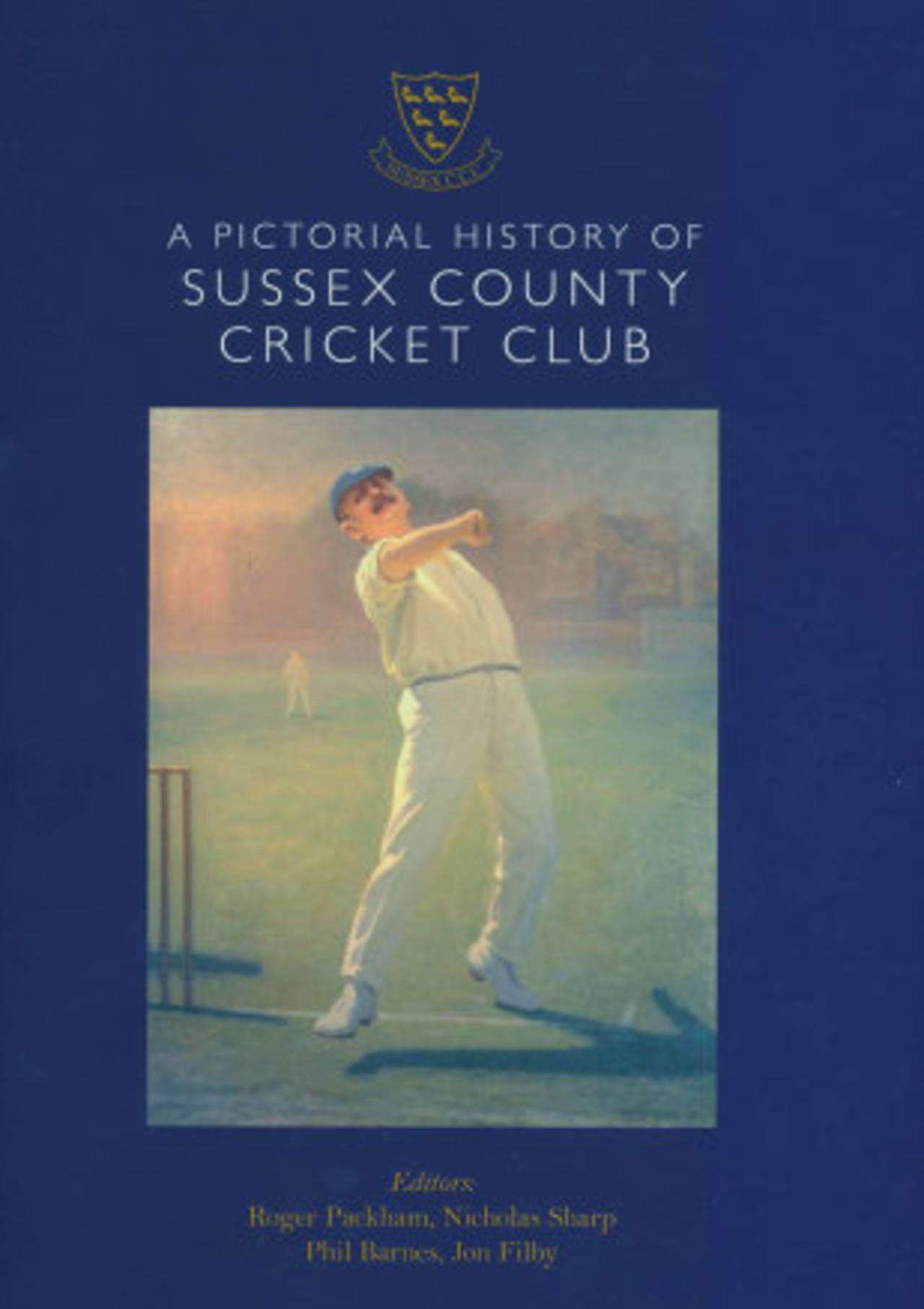A bowler in delivery stride, coiled and capped. A thick, sinister moustache is matched for menace by a piercing sidelong gaze. The left sole is planted with the delicacy of a ballerina, the right cocked just above the pitch and equally dainty. Right arm curls across an ample chest; there is no evidence whatsoever of the left. Welcome to the arrestingly creative world of cricket art in the 1920s.
Welcome, too, to an alluring visual hike across 175 years of Sussex CCC, the oldest first-class club of all. If you know your cricketana, you might assume that the aforementioned portrait celebrates the subtle spite of Wilfred Rhodes; actually, the subject is another durable slow left-armer,
George Cox. In both cases the brushes belonged to Ernest Moore: the commission came after the Sussex chairman saw his study of the Yorkshire titan. In fact, Cox outdid his contemporary for longevity: in 1926, at 52, he collected 17 Warwickshire scalps in Horsham - and he was still on the circuit two seasons later.
Venerability powers this largely and gloriously black-and-white tome. To tuck into it is to be reminded of the disproportionate footprint left on the planet's finest ball game by a modest, homely institution that only became a consistent county powerhouse at the overly ripe age of 164 (
Chris Adams led the club to its first Championship in 2003).
Seldom has a set of cover images spanned so much:
John Wisden in a baker's cap and blue cravat;
Ranjitsinhji skipping out to drive, a fusion of joy and devilry; nephew
Duleepsinhji walking out to bat with that beefy monument to medium-pace mastery,
Maurice Tate;
Ted Dexter hoisting the inaugural Gillette Cup; Adams cradling another pot as if it were his first-born child.
If the only obvious omission is Tony Greig, there's compensation galore inside, especially a photo from 1966, the year he arrived at Hove.
Alan Oakman (6ft 6in to Greigy's 6ft 7in) peers down at perky
Ken Suttle (a good foot shorter), who set a Championship record with 423 consecutive outings; hands clasped respectfully behind his back, the dashing South African émigré grins sheepishly. Never again would he look so subservient.
Interwoven with decade-by-decade summaries of deeds and misdeeds, other gems abound, a number, gratifyingly, related to Lewes - scene of not only one of the key battles in English history 750 years ago but the birthplace of Thomas Paine's Rights of Man, and now home to this flagrantly biased reviewer. There's a remarkably well-preserved ball, circa 1770, unearthed from the plasterwork of a house in South Street. A window bill promotes an 1817 match between "the Gentlemen of the Brighton Club and the Gentlemen of the Town of Lewes", played beside the now-defunct racecourse; the ad carries a promise of "good accommodation" from the owner of the still-intact Lamb Inn.
All the same, it's the monochrome snaps that magnetise:
CB Fry on-driving with haughty aplomb; the equally lordly
Imran Khan squeezed on the end of a bench, braving the April chill; an angelic
David Sheppard, future Bishop of Liverpool and anti-apartheid campaigner, leading the 1st XI out at Hove in 1953, hair swept back in apparent homage to Tate;
John Snow in the nets, following through with illusory languidness and the poise of Fred Astaire; a floppy-haired and vaguely foppish
Nawab of Pataudi - county debutant at 16, captain nine years later.
The highlights are endless. Field Marshal Montgomery at Horsham in 1946, flanked by the Sussex and Glamorgan XIs before the hosts folded for 35. The following summer finds Sir Charles Aubrey Smith, ex-England captain, Hollywood star and founder of Tinseltown's very own cricket club, returning to Hove arm in arm with fiendishly gap-toothed Arthur Gilligan, another sometime England skipper as well as an enthusiastic member of the British Union of Fascists. Dexter rehearsing: bat high, hips cocked, destruction assured. Even so, for a Londoner seduced in boyhood by the yawping seagulls and salty waft discovered at the only seaside county HQ, nothing matches the candy-striped deckchairs portrayed by Martin Speight, stumper turned painter: oh-so English and still uniquely, wonderfully Hove.
While all pictorial cricket books labour in the shadow of David Frith's magnificent Pageant of Cricket, the only significant difference between this handsome offering and Frith's bar-setting doorstop is the captions. In the latter they are mini-stories, brimful of compositional flair; here, like the vast majority of their breed, they are strictly functional, overly reliant on stats and often repetitive. Still, an unfair comparison and a minor gripe. Anyone wishing to savour the game's evolution is guaranteed a feast.
A Pictorial History of Sussex County Cricket Club
edited by Roger Packham, Nicholas Sharp, Phil Barnes and Jon Filby
Sussex Museum and Educational Trust
236 pages, £25


